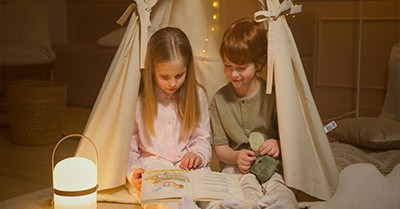In a busy early learning room, nestled between a soft rug and a basket of sensory tools, something quietly revolutionary was unfolding. It wasn’t a new curriculum or a flashy resource—it was a space. A space designed not for punishment, but for peace. Not for isolation, but for connection. It was the Calm Corner, and it changed everything.
Educator Mia had noticed escalating meltdowns during transitions. Instead of reaching for a behaviour chart, she reached for empathy.
“The children weren’t misbehaving,” she said. “They were overwhelmed. They needed somewhere to feel safe, not shamed.”
Drawing on trauma-informed practice and co-regulation strategies, Mia co-designed the Calm Corner with her preschoolers. Together, they chose textures, colours, and comfort items — a weighted pillow, a feelings wheel, a photo of their class pet. It wasn’t just a space; it was a co-created sanctuary.
Co-Regulation in Action
The Calm Corner wasn’t a timeout zone. It was a tune-in zone. When a child felt dysregulated, Mia would gently guide them to the space, sit nearby, and model breathing or narrate feelings:
“Your body looks like it’s having a big feeling. I’m here with you. Let’s find calm together.”
Over time, children began initiating their own visits. They’d say, “I need the calm corner,” or “I’m choosing to breathe.” Emotional literacy blossomed. Peer empathy grew. Even families began replicating the space at home.
Child Voice and Agency
One day, a four-year-old named Leo placed a drawing in the Calm Corner. It showed a storm cloud and a sun.
“This is how I feel sometimes,” he said. “Stormy first, sunny after.”
Mia added it to the wall, and soon other children contributed their own emotional metaphors — a visual chorus of self-awareness.
The Ripple Effect
The Calm Corner didn’t just support children. It transformed the culture of the room. Educators began using it during team check-ins. Parents reported calmer bedtimes. And Mia She felt more connected to her purpose than ever.
“We’re not just teaching ABCs,” she said. “We’re teaching children how to be with themselves — and with others — in the hardest moments. That’s emotional architecture.”
Further Reading
Calm Down Box For Children
Practical Hacks For Educators
De-escalation Strategies For Managing Toddler's Behaviour
30 Emotional Regulation Activities For Toddlers and Preschoolers
Strategies To Support The Mental Health of Toddlers
De-escalation Strategies For Violent Behavior in Young Children
Self-Talk To Support Self-Regulation
Supporting Children Manage Their Anxiety







 As an Educator in Australia, your pay rate falls under the Children’s Services Award 2010. This award states the minimum amount that an employer can
As an Educator in Australia, your pay rate falls under the Children’s Services Award 2010. This award states the minimum amount that an employer can When working as a qualified Early Childhood Teacher (with a university degree) within a service, your rate of pay will come from the Educational Services
When working as a qualified Early Childhood Teacher (with a university degree) within a service, your rate of pay will come from the Educational Services When working as a Diploma Qualified Educator your pay rate is from the Children's Services Award 2010. This Award states your minimum rate of pay
When working as a Diploma Qualified Educator your pay rate is from the Children's Services Award 2010. This Award states your minimum rate of pay When working as a Cert 3 Qualified Educator, your pay rate is from the Children's Services Award 2010. This Award states your minimum rate of
When working as a Cert 3 Qualified Educator, your pay rate is from the Children's Services Award 2010. This Award states your minimum rate of Educational Leaders play a crucial role in their early childhood service by ensuring that the educational program aligns with best practices and supports the holistic
Educational Leaders play a crucial role in their early childhood service by ensuring that the educational program aligns with best practices and supports the holistic In early childhood education and care, ratios are more than a technicality—they are a frontline safeguard. Every child deserves responsive supervision, emotional connection, and developmental
In early childhood education and care, ratios are more than a technicality—they are a frontline safeguard. Every child deserves responsive supervision, emotional connection, and developmental With the new national child safety reforms kicking in on 1 September 2025, early childhood services like yours have a real opportunity to lead the
With the new national child safety reforms kicking in on 1 September 2025, early childhood services like yours have a real opportunity to lead the Here’s a comprehensive Mobile Phone and Smart Watch Policy tailored for early childhood education and care (ECEC) services in Australia, aligned with the latest 2025
Here’s a comprehensive Mobile Phone and Smart Watch Policy tailored for early childhood education and care (ECEC) services in Australia, aligned with the latest 2025 The Sea of Fish Challenge is a national initiative that invites children, educators, families, and communities to create and display fish artworks as a symbol
The Sea of Fish Challenge is a national initiative that invites children, educators, families, and communities to create and display fish artworks as a symbol Across the early childhood education and care sector, educators are sounding the alarm: current staffing ratios are insufficient to deliver safe, meaningful, and developmentally appropriate
Across the early childhood education and care sector, educators are sounding the alarm: current staffing ratios are insufficient to deliver safe, meaningful, and developmentally appropriate


